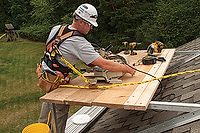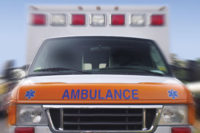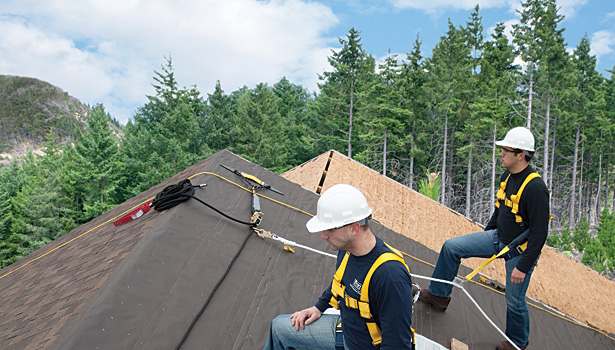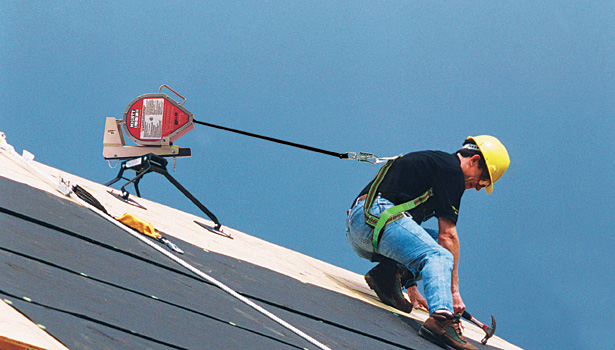Residential Fall Protection: Coping With Changes
How hew OSHA regulations will affect residential contractors




OSHA’s new STD 03-11-002 — Compliance Guidance for Residential Construction was issued on June 16, 2011. This instruction cancels OSHA’s previous STD 03-00-001 — Plain Language Revision of STD 3.1 (Interim Fall Protection Compliance Guidelines for Residential Construction – 6/18/99). OSHA’s 14-year-long “interim period” will apparently be over on March 15, 2013. Then what?
What Do I Do Now?
The answer to this basic question can be summarized as follows: Unless the deadline is moved again, on March 15 residential contractors will be required to comply in full with the entire 29 CFR, Part 1926.500, just like every other construction employer has since 1999. The following is an overview of the four basic steps involved; for more details, consult your OSHA representative or a certified safety professional.
Step 1:The construction employer must provide his employees who walk or work at heights greater than 6 feet above a lower level with one (or more) of the following OSHA-standard hazard control methods, listed in 29 CFR, Part 1926, Subpart M:
• Personal fall arrest systems
• Guardrail systems
• Safety net systems
• Or any other permissible methods otherwise described in Part 1926.501(b)
Step 2:The employer may decide to become exempted from providing his employees any of those standard fall protection systems as long as he or she can successfully demonstrate that such fall protection is infeasible or presents a greater fall hazard.
Step 3: Demonstration that standard safety measures are infeasible or cause a greater hazard will take the form of implementing a documented Residential Fell Protection Plan (RFPP) according to Part 1925.501(b)(13) and 1926.502(k), including accurately describing the employer’s real attempts to implement standard fall protection measures. Noting in each case of variance, exactly why either (1) the standard fall protection method was compromised or interfered with (below a 2X safety factor) in some way by the work itself, or (2) a phase of work could not be successfully completed in any way due to the interference or limitations of the fall protection system. Remember, that as soon as these criteria no longer apply, the employer must return to practicing standard fall protection measures.
The plan must also describe the methods required to design, install, maintain and inspect alternate fall protection measures. These utilize safe work practices (administrative hazard controls), which the employer can demonstratively prove will “eliminate or reduce the possibility of a fall.”
The RFPP must include the procedure for training and evaluating employees in the plan itself. Such training must be certified by a Competent Person (CP) and comply with the same criteria found in Part 1926.503. The plan must include the name of the CP trainer and thoroughly document subjects covered (agenda) and date(s) and location(s) of training. This could be accomplished over a number of “tailgate” safety meetings on site, as long as employees have been trained on the entire RFPP before work exposing fall hazards has begun. Don’t forget to perform and provide written and field evaluations (with audit logs) as sufficient documentation to prove competency beyond any doubt.
Be careful not to assume that the use of standard fall protection systems doesn’t require careful planning as well. Selecting, fit-testing, inspecting, maintaining, assembling, erecting and disassembling the standard-based fall protection systems on most projects takes a set of organizational skills that only come from a solid plan. Even compliant equipment has to be evaluated for the phase of the work, site conditions, workers’ tasks and biometrics.
Step 4: The RFPP must be in writing. Based on the trend of a rising number of successful civil litigations I have reviewed, I would recommend the following agenda:
• The RFPP should be translated into any “first” language spoken by your employees. (Note: For instance, the Puerto Rican OSHA website, www.trabajo.pr.gov/prosha, is entirely in Spanish.)
• Copies of the RFPP should be disseminated and clearly explained to all employees, and any/all of their questions should be answered before collecting signed and dated hard copies of the acknowledgement forms for your employee files.
• Whenever employees of any ethnicity are engaged in work requiring either standard or alternate fall protection systems, the success of any method of hazard protection relies on a reasonable and effective method of hazard communication. It is the employer’s responsibility to know the speaking/listening and writing/reading English language skills of the workforce. Ignorance in this matter will not obviate responsibilities in a court of law or prevent unnecessary injuries or death on the worksite.
• The RFPP must be site specific. The majority of civil lawsuits I have reviewed clearly indicated the employer (defendant) simply downloaded a copy of OSHA’s exemplary RFPP found in Part 1926.500, Appendix E. No further good faith effort was made to tailor it to the specific worksite.
• While the basic plan above is quite legitimate, it is simply a skeleton plan. The employer must flesh out the specific details. It takes a more conscientious effort on his part than “enter company name here.” A good RFPP should “live, breathe and bleed” just like your employees.
• Upon reading the RFPP, your employees should have zero questions on what you expect of them on every shift. Keep asking the newspaper reporter’s mantra: “who, what, where, when, why, how and how much?”
• The RFPP must be task specific. For instance, the task of roof tear-off poses its own set of unique fall hazards compared to roofing a new residence. Similarly, composite shingles, shakes, slate, tile or metal roofs all pose individual and unique hazards when applying. A RFPP for a 6/12 pitch ranch roof job is obviously far simpler to plan than a 16/12 Victorian-period turret or a 20/12 mansard roof.
• The RFPP must be worker-specific. It is critical for plan management to consider three designative categories from which to list all of your employees who will be involved in this residential project with recognized fall hazards:
1. Competent Person (CP) — According to Part 1926.32(f)
2. Qualified Person (QP) — According to Part 1926.32(m)
3. Authorized (Approved) Person (AP) — According to Part 1926.32(d)
Not everyone will be eligible for any of these designations. When it comes non-delegable duties, the employer and his employees both have certain rights and obligations. Rights and responsibilities are like two sides of the same coin. It is important that each employee understands his own liabilities and responsibilities, as well as those delegated to each designation. All employees should be given their assignments well before the job begins and understand them thoroughly before they are accepted. These are, quite literally, legally binding assignments whenever a personal injury case finds its way to the courtroom. If you’re not capable of meeting such duties for any reason, make it known clearly and immediately to your employer.
How Do I Do It?
The key to effectively changing your safe work practices comes in the form of well-trained employees. The RFPP is written by a Qualified Person, while the plan’s day-to-day implementation is the duty of the Competent Person (CP). Thereby the CP becomes a legal representative of the employer who designated him, with all of his responsibilities and authority. The QP is also responsible for reviewing and making any changes in the RFPP on a regular basis and after any accident or near-miss event. For reason of conflict of interest, the employer should always designate a CP who is not, simultaneously, the job foreman or project manager.
Perhaps the single most important job of the CP for the controlling employer in his RFPP is to perform “frequent and regular inspections of the jobsites” where the hazards exist or have the potential to exist. Remember that alternate fall protection procedures, by their very nature, can be less protective and thereby less desirable than the standard procedures. They are usually restricted to administrative controls and, as such, are replete with all of the shortcomings commonly found in human nature.
Be precise and careful with the use of any binding language. I know of one contractor whose RFPP stipulated he would perform a “mandated ongoing inspection program.” Years later, after a fall accident, the court determined that Webster’s Unabridged Dictionary definition of “ongoing” was allowable: “Uninterrupted and without termination.” This was clearly an inhuman goal, but one whose implication was considered “reasonably binding” by the jury. Also, never trust an electronic program (fee or free) to contain everything you need to be compliant with OSHA. The best way to get to a satisfactory version of a RFPP is to perform multiple job safety analyses on your projects and regularly analyze them for risk exposures and successful hazard controls. In a matter of time you will be capable of quickly and accurately identifying and specifying those jobsites where an alternate fall protection method may supplant standard fall protection procedures.
A plan is only as good as its conveyance. Verify that those employees you are going to authorize and trust to apply their good faith effort are properly trained and informed of all the site-specific details and their responsibilities and roles. Make sure they have no questions about what is expected of them every step of the way. While Part 1926.500 does not necessarily require documentation of site inspections and audits, all of the Compliance Officers for Safety and Health in Region I and II who I have asked believe that complete and comprehensive documentation on the part of the CP is his/her primary proof of competence. If it wasn’t logged (or “demonstrated”), the professional assumption is it didn’t happen.
Looking for a reprint of this article?
From high-res PDFs to custom plaques, order your copy today!







